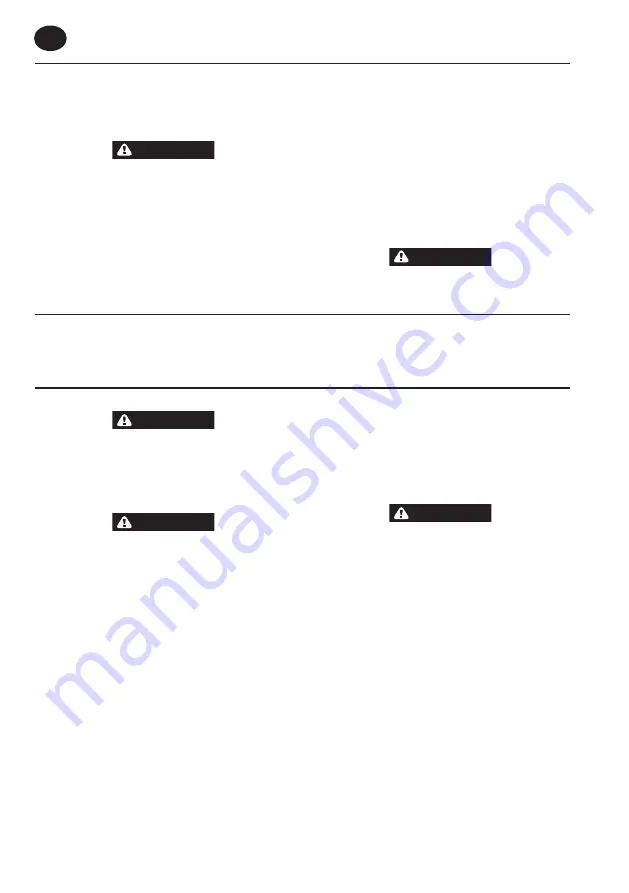
EN
4
45649027_ed2
Inspections and Maintenance
WARNING
Maintenance may be carried out only by skilled and authorized
personnel.
The user must visually inspect the Balancer on a regular basis
(such as, for instance, at each work shift) especially to check the
state of suspensions A and S (Fig.1), the fixing screws and the
self-locking systems (if used), and the condition of the hooks and
cable.
WARNING
Should the cable have the defects shown in Fig.8, replace it
immediately.
•
Do not make any modification to the cable unit and, specifically,
DO NOT SHORTEN the cable: if needed, please get in touch with
Ingersoll Rand.
Check that the cable’s movement is smooth and that it does not
make any strange noises.
Do not lubricate the Balancer with flammable or volatile fluids.
Do not remove any labels. Replace any damaged labels.
The Balancer must be inspected at least once a year by skilled,
authorized personnel.
WARNING
Never disassemble the Balancer. Maintenance is to be carried out
only by skilled, authorized personnel.
The Balancer must be disposed of complying with prevailing
rules and regulations at the end of its work life.
•
•
•
•
•
Safety devices
The Balancer is fitted with a safety device that trips if the drum’s
spring breaks and stops operations to prevent the hanging load from
falling. If you are unable to move the hanging tool up or down using
moderate force,
DO NOT continue but contact our technical service at once.
NOTE: the Balancer locks even if the drum spring is completely
discharged. To restore working efficiency, attempt to charge the
spring as outlined in paragraph “Adjusting the Balancer”. If the
Balancer does not release,
DO NOT do anything but contact the technical service at once.
To enable the Balancer to balance heavier loads, use wrench D
to turn the knob 6 counterclockwise, identified by symbol “+” as
shown in the figure (Fig.2). For lighter loads, press the end of the
spring 9 (Fig.) and turn it clockwise, identified by symbol “-” as
shown in the figure (Fig.).
WARNING
Do not use the wrench on knob 6 to decrease the load. (The
latching system could break if you force the knob using the
wrench in the load-decreasing direction).
After having adjusted the load, check that the cable slides freely
for its entire length: the movement must not be restricted when
the spring has wound all the way. Check the stroke often and at
different speeds.
•
•
Only For Model Series BMDLLN
BMDLLN models are fitted with a mechanism that locks the
rewinding of the cable. This permits working without the cable
traction, for instance inside a car (Fig. 7). The locking is achieved
through the slow upward movement of the tool.
In order to release the rotation of the drum, pull the tool slightly
downwards but make it go back up quickly.
In order to prevent undesired locking, it should go up at a suitable
speed.
The locking kinematism may be neutralized by tightening the
screw (25) all the way while the load goes up and down (Fig. 6).
NOTE: Should the Balancer’s capacity of supporting a hanging load
decrease, this could mean that the spring of the drum is about to
break.
WARNING
Do not modify Balancer adjustment to make it hold up the
load in all cases but contact skilled personnel in charge of
maintenance at once.
•
•
•
•
Adjusting the Balancer
Содержание BMDLLN Series
Страница 37: ...Notes...
Страница 38: ...Notes...
Страница 39: ...Notes...
Страница 40: ...www ingersollrandproducts com 2009 Ingersoll Rand Company...



















